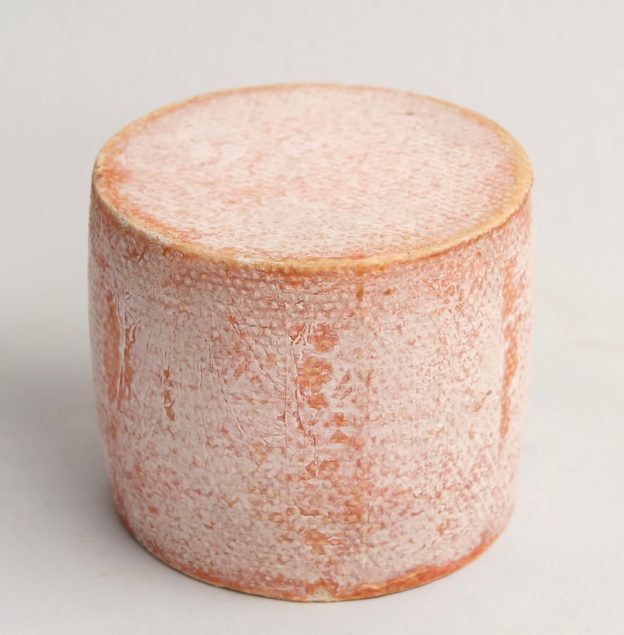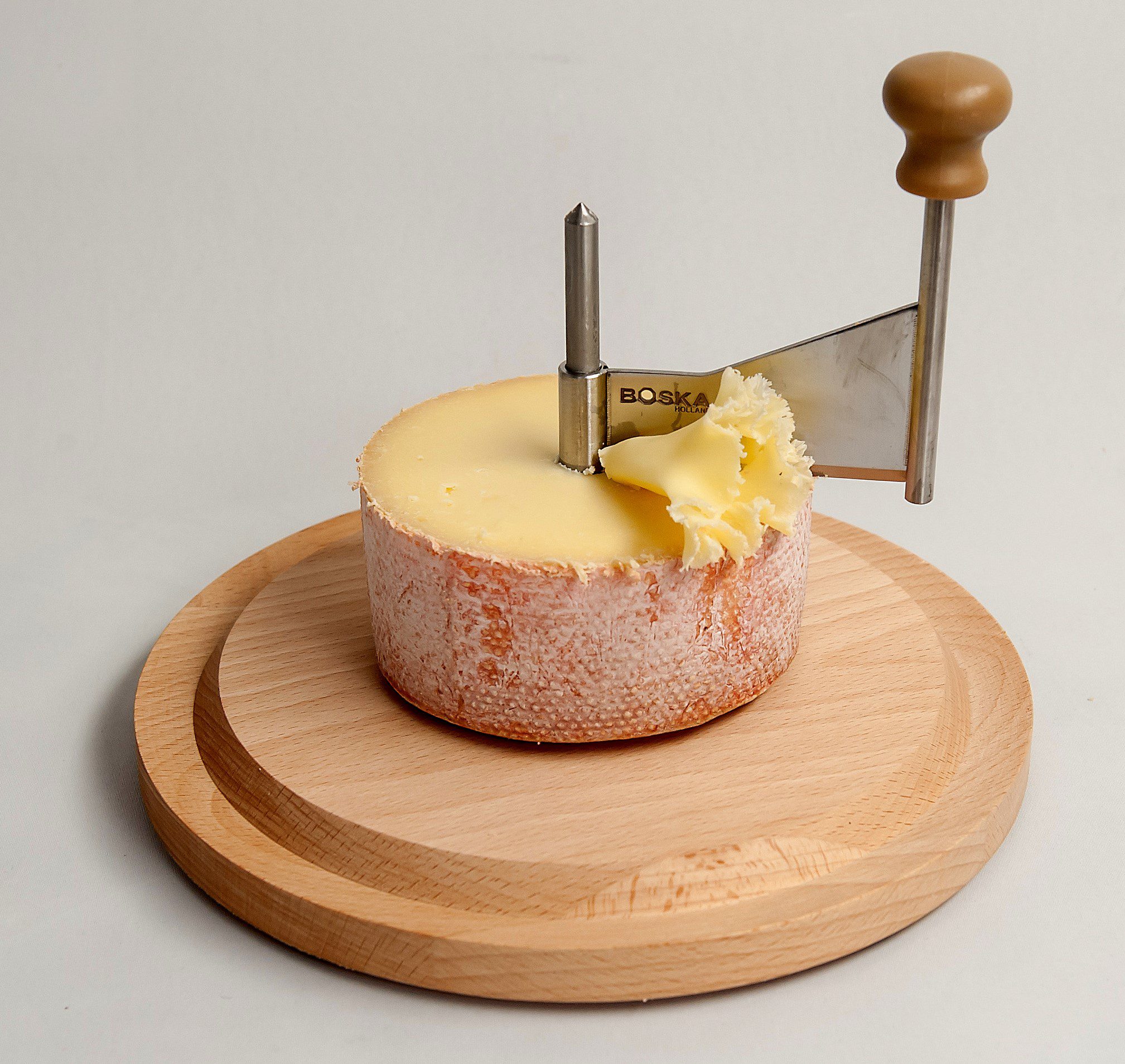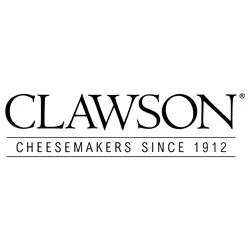Tête de Moine AOP
The Basics
| Make | Hard cooked |
| Sub Make | Alpine style |
| Post-Make | Washed rind |
| Sub Post-Make | Rind washed then dry brushed |
| Typical age profile | 4 months. Silver foil wrapper (classic) up to 4 months and Gold foil wrapper (reserve) for more than 4 months |
| Approximate weight(s) | 700-900g |
| Geographical origin | Jura, Switzerland |
| Protected status | AOP – can only be made with raw milk in the districts of the Freiberge, Pruntrut, Moutier und Courtelary, the municipality Saulcy, and the parcel of land belonging to the cheese dairy Courgenay. |
| Species of milking animal | Cow |
| Breed of cow | Breed not specified |
| Raw/pasteurised milk | Raw cows' milk |
| Vegetarian/animal rennet | Animal |
| Commonly encountered variations | N/A |


The Story
Tête de Moine (‘monk’s head’) is named in honour of the men of the cloth who are believed to have invented the cheese in the 12th century. Records from 1192 indicate the monks of Bellelay Monastery in the Bernese Jura in Switzerland would pay the rent on properties with cheese made in their abbey. The monks were evicted in 1797 during the French Revolution, but the cheese continued to be made there before production passed to local farms and then village dairies.
The Appellation d’Origine Protegée (AOP) specifies whole, raw cows’ milk, the use of copper vats and traditional rennet. The curd is cut into grain-sized pieces and heated to 46-53°C, before being pressed in moulds and brined. The cheeses are aged on spruce boards for at least 75 days in a humid cheese cellar (about 90% humidity) at a temperature of 13-14°C, during which time they are washed with brine and dry brushed.
The final cheese is sometimes served using a device called a Girolle (invented in 1982 by a Swiss engineer), which comprises a blade to shave the top of the cheese in a circular motion, creating thin, frilly rosettes of cheese.
The Character
The rind is firm and brown to reddish-brown in colours, while the past is ivory to light yellow. The texture is pliable with sweet, nutty and savoury flavours predominating.
Perfect Partners
A Lake Geneva white, made with chasselas grapes, is a classic match. The light, spritzy wine has a delicate floral flavour that contrasts with the savoury notes of the cheese.
References
- [1] - https://www.tetedemoine.ch/en/, accessed on 20/06/18
- [2] - https://www.aop-igp.ch/en/tete-de-moine-aop/, accessed on 20/06/18
- [3] - Harbutt, J. (2015) World Cheese Book; p. 242

















